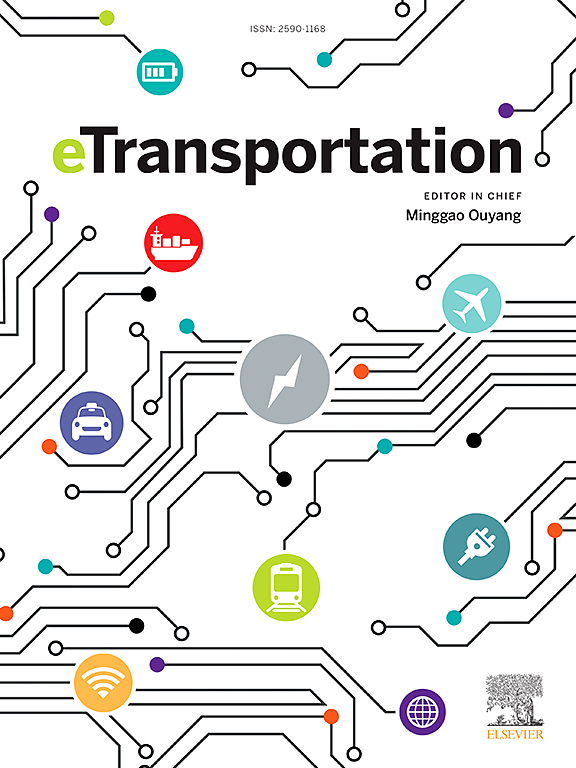混合融合电池退化诊断使用最小的真实世界数据:桥接实验室和实际应用
IF 17
1区 工程技术
Q1 ENERGY & FUELS
引用次数: 0
摘要
电池寿命的不可预测性一直是电动汽车和固定式储能系统等安全关键系统技术进步的主要障碍。在这项工作中,我们提出了一种新的混合融合策略,结合了基于物理和数据驱动的方法来准确预测电池容量。该策略通过卷积神经网络实现,在整个电池寿命期间平均估计误差仅为0.63%,仅使用45个真实数据段以及来自随机部分充电周期的170多万个模拟数据段。通过利用经过彻底验证的降阶电化学模型,我们从实验室老化数据中提取典型的老化模式,并将其扩展到更全面的参数空间,包括潜在的实际应用中的各种电池老化状态,同时考虑到实际电池之间的变化。通过弥合受控实验室实验和现实世界使用场景之间的差距,该方法突出了将基础知识从高保真物理模型转移到数据驱动模型以预测复杂动力系统行为的巨大潜力。本文章由计算机程序翻译,如有差异,请以英文原文为准。
Hybrid fusion for battery degradation diagnostics using minimal real-world data: Bridging laboratory and practical applications
Unpredictability of battery lifetime has been a key stumbling block to technology advancement of safety-critical systems such as electric vehicles and stationary energy storage systems. In this work, we present a novel hybrid fusion strategy that combines physics-based and data-driven approaches to accurately predict battery capacity. This strategy, implemented via a convolutional neural network, achieves an average estimation error of only 0.63 % over the entire battery lifespan, utilizing merely 45 real-world data segments along with over 1.7 million simulated data segments derived from random partial charging cycles. By leveraging a thoroughly validated reduced-order electrochemical model, we extract typical aging patterns from laboratory aging data and extend them into a more comprehensive parameter space, encompassing diverse battery aging states in potential real-world applications while accounting for practical cell-to-cell variations. By bridging the gap between controlled laboratory experiments and real-world usage scenarios, this method highlights the significant potential of transferring underlying knowledge from high-fidelity physics-based models to data-driven models for predicting the behavior of complex dynamical systems.
求助全文
通过发布文献求助,成功后即可免费获取论文全文。
去求助
来源期刊

Etransportation
Engineering-Automotive Engineering
CiteScore
19.80
自引率
12.60%
发文量
57
审稿时长
39 days
期刊介绍:
eTransportation is a scholarly journal that aims to advance knowledge in the field of electric transportation. It focuses on all modes of transportation that utilize electricity as their primary source of energy, including electric vehicles, trains, ships, and aircraft. The journal covers all stages of research, development, and testing of new technologies, systems, and devices related to electrical transportation.
The journal welcomes the use of simulation and analysis tools at the system, transport, or device level. Its primary emphasis is on the study of the electrical and electronic aspects of transportation systems. However, it also considers research on mechanical parts or subsystems of vehicles if there is a clear interaction with electrical or electronic equipment.
Please note that this journal excludes other aspects such as sociological, political, regulatory, or environmental factors from its scope.
 求助内容:
求助内容: 应助结果提醒方式:
应助结果提醒方式:


